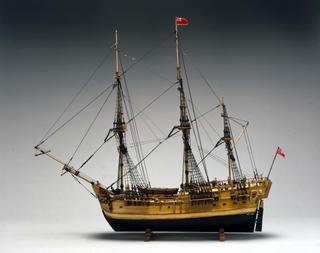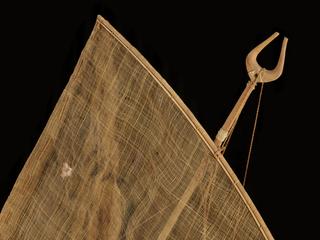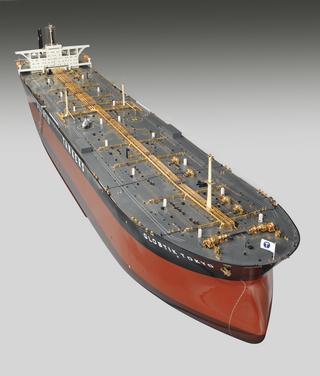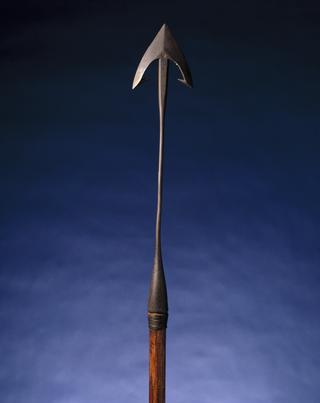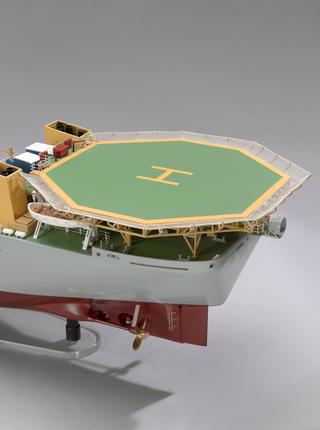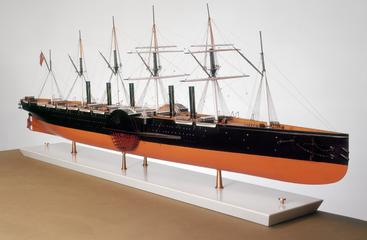

Rigged model of a Falmouth 'Quay Punt'. Made by Lt. Col. C.E. Terry O.B.E. in Falmouth, July 1936. Falmouth 'Quay Punts' were designed for the work of tending sailing ships in Falmouth Bay and off the Lizard. They had to be good sea-boats and also reasonably fast. Their rigging was so arranged that a Quay-Punt could be easily handled by one man. Scale 1:12.
Quay-punts were used to attend and supply provisions and stores to sailing ships in Falmouth Bay and off the Lizard.
Carvel-built, with an almost vertical transom stern, the quay-punt was a good sea-boat and reasonably fast. As it was not normally hauled up on a beach, it was designed with considerable depth, particularly aft. Legs were fitted so that the vessel could remain upright when dried out in harbour.
To facilitate the storage of stores of all kinds, and even a sick man on occasion, the cockpit was large, with as little obstruction as possible amidships and only a small cuddy forward.
The rig consisted of a gaff mainsail, a foresail and a small triangular sail on the mizen. To avoid fouling the rigging of sailing ships when going alongside, the mainmast was kept short, without a topmast, and a topsail was not used. During the summer months a bowsprit was sometimes fitted and a jib set, while a standing lug-sail was substituted for the triangular mizen sail.
With the virtual extinction of sailing ships the need for quay-punts came to an end and those which survived were converted into yachts.
Details
- Category:
- Water Transport
- Object Number:
- 1936-368
- Materials:
- wood (unidentified), cotton (fibre), cotton (textile), metal (unknown) and paint
- Measurements:
-
overall: 953 mm x 885 mm x 238 mm,
- type:
- model - representation, punt (watercraft) and watercraft
- credit:
- Terry, Lt. Col. C.E.
